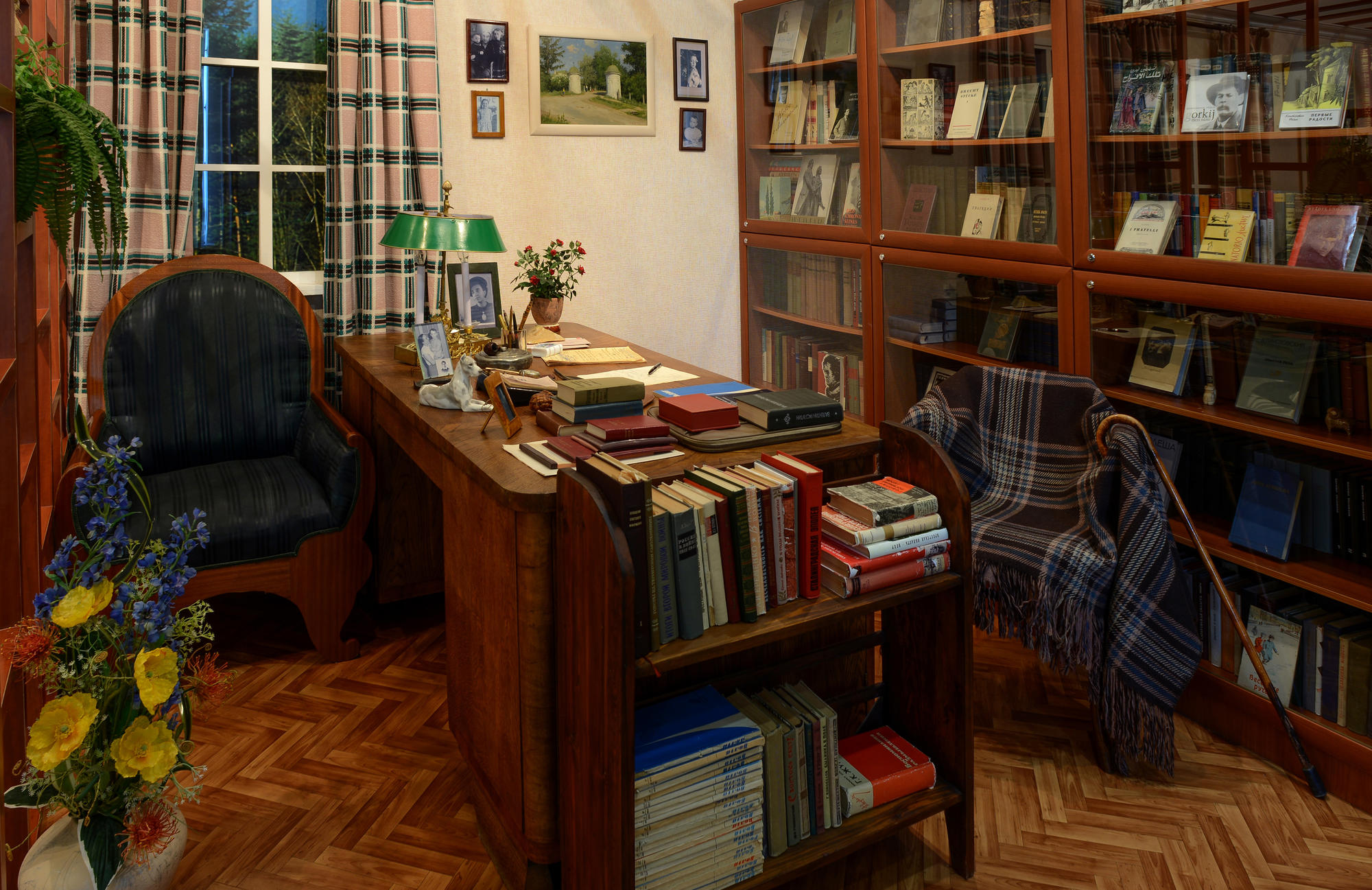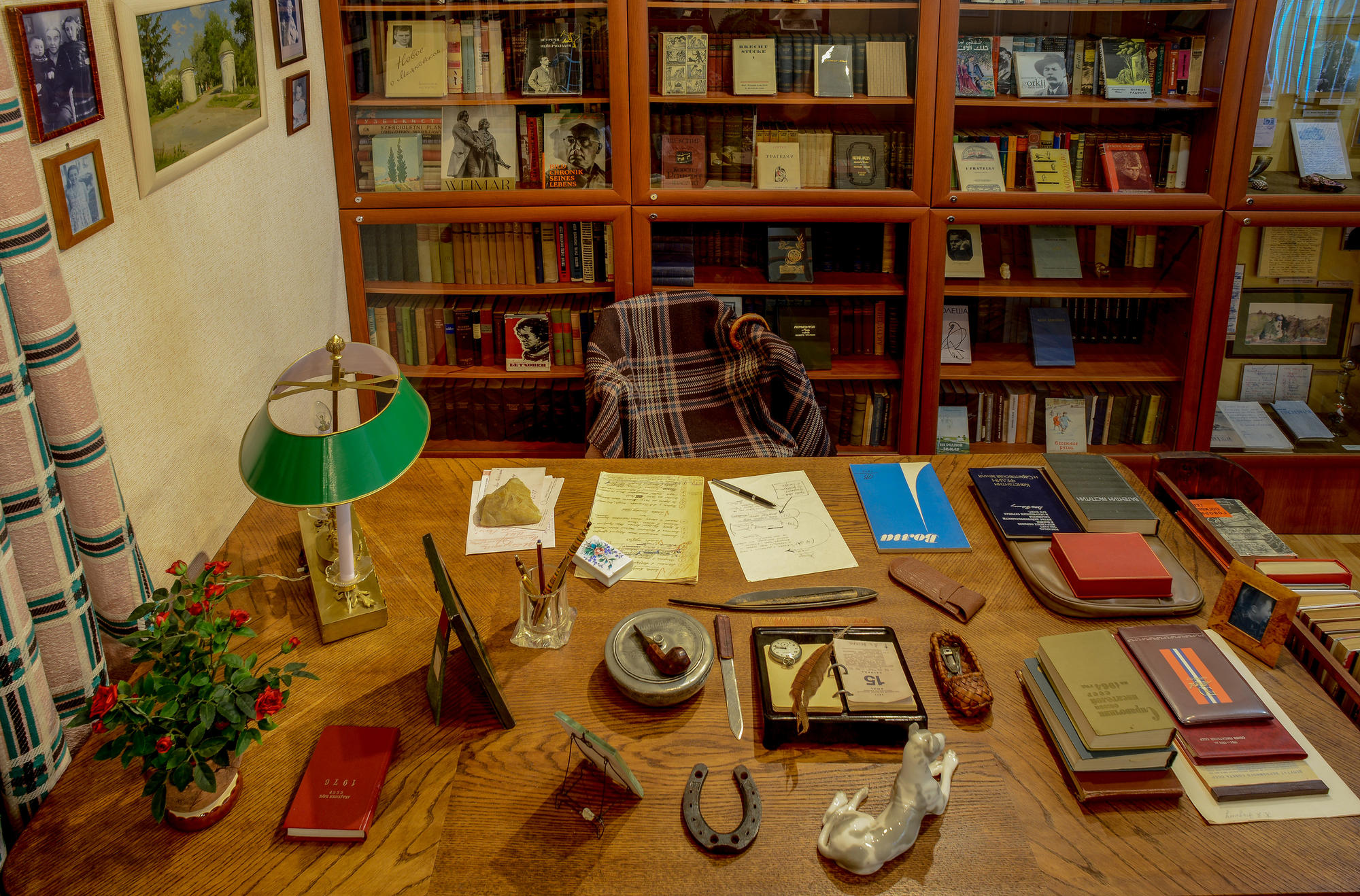Fedin’s desk was located in the study of his dacha in Peredelkino. His daughter Nina Konstantinovna donated for the original exposition, which opened in 1981. All of the writer’s major works were written at this desk and included the trilogy First Joys, Unusual Summer, and Bonfire, Gorky Among Us, and Writer. Art. Time. The table is wooden, with two cabinets, each of which contains three drawers. The surface of the table is rectangular in shape with rounded corners. The table and nightstands are finished with a light wood veneer. There is a table located near an imitation window overlooking a pine forest, just like at the dacha.
Set out on the table are the writer’s personal belongings, which help us to more fully imagine Fedin’s habits, attachments, and routine. Everything is laid out and arranged as in the last months of Fedin’s life: photographs of his daughter Nina, granddaughter Varya, and grandson Konstantin. The centre of the table bears manuscripts of the unfinished novel Bonfire. The desk calendar is open to 15 July 1977, the last day of the writer’s life.
Fedin had a traditional 19th century Bouillotte lamp with a green metal lampshade on his desk. Such lamps were typical of the end of the 18th – beginning of the 19th centuries and were used for card games. An opaque lampshade was installed so that the light fell on the table and the player’s cards while leaving their faces in the shadow. The name of the lamp is derived from the popular French card game of the same name (Bouillotte). Lamps with green lampshades eventually migrated from cared tables to desks in the offices of officials and library reading rooms. They were later replaced in the USSR by electric table lamps, though with green shades as before. Fedin’s Bouillotte lamp was restored and converted into an electric by his son-in-law Alexander Rogovin, an artist from the Stanislavsky Theatre.
A wooden shelf with books about the Second World War is positioned against the end of the table. These include primarily military memoirs and historical monographs that the writer might need while working on new chapters of Bonfire. There is blanket on a wooden chair with a cane standing alongside.
Set out on the table are the writer’s personal belongings, which help us to more fully imagine Fedin’s habits, attachments, and routine. Everything is laid out and arranged as in the last months of Fedin’s life: photographs of his daughter Nina, granddaughter Varya, and grandson Konstantin. The centre of the table bears manuscripts of the unfinished novel Bonfire. The desk calendar is open to 15 July 1977, the last day of the writer’s life.
Fedin had a traditional 19th century Bouillotte lamp with a green metal lampshade on his desk. Such lamps were typical of the end of the 18th – beginning of the 19th centuries and were used for card games. An opaque lampshade was installed so that the light fell on the table and the player’s cards while leaving their faces in the shadow. The name of the lamp is derived from the popular French card game of the same name (Bouillotte). Lamps with green lampshades eventually migrated from cared tables to desks in the offices of officials and library reading rooms. They were later replaced in the USSR by electric table lamps, though with green shades as before. Fedin’s Bouillotte lamp was restored and converted into an electric by his son-in-law Alexander Rogovin, an artist from the Stanislavsky Theatre.
A wooden shelf with books about the Second World War is positioned against the end of the table. These include primarily military memoirs and historical monographs that the writer might need while working on new chapters of Bonfire. There is blanket on a wooden chair with a cane standing alongside.




